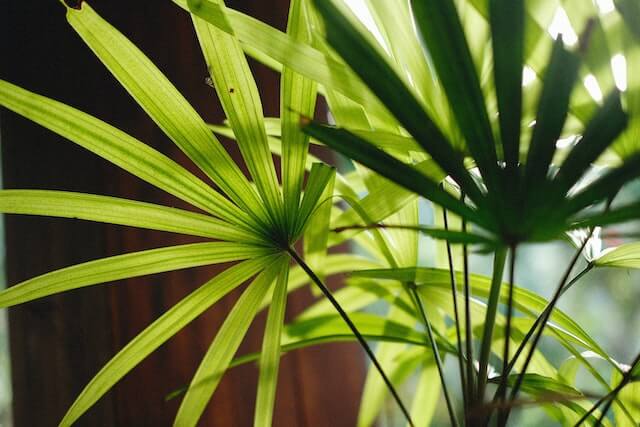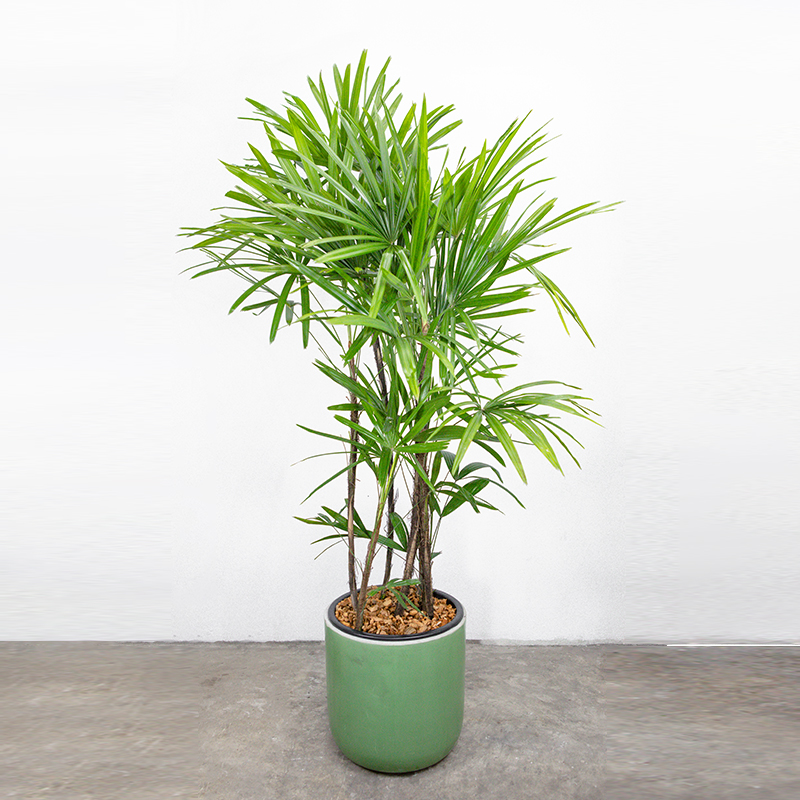Lady palm (Rhapis excelsa) is a striking and elegant houseplant native to Southeast Asia. It is known for its lush and green foliage, which is shaped like a fan. The plant has multiple thin stems that grow from a central point, and each stem is topped with a cluster of leaves. Lady palm can grow up to six feet tall, making it a great choice for larger rooms or as a statement piece in any indoor space.

One of the best things about lady palm is that it is relatively low-maintenance. Lady palm is not only beautiful but also beneficial for air quality, as it is known to filter out toxins such as benzene, formaldehyde, and carbon monoxide. Overall, lady palm is an excellent choice for anyone looking for a low-maintenance, elegant, and air-purifying houseplant that will thrive and provide you with beautiful foliage for years to come.

Light and Water
Light: Lady palms prefer 3-6 hours of bright, indirect light but can also tolerate low light conditions. Avoid exposing the plant to hot direct sunlight, as this can scorch the leaves. If the plant is not getting enough light, its leaves may turn yellow or brown.
Water: Lady palms like to be kept evenly moist but not waterlogged. Water your lady palm once a week, or when the top inch of soil feels dry. Use room temperature water to avoid shocking the plant, and avoid using hard water, which can cause mineral buildup in the soil. Always water deeply and let soil drain out completely to avoid soggy soil which is the main cause of root rot.
Temperature and Humidity
Temperature: Lady palms prefer a warm, consistent temperature between 16-27°C. Avoid exposing the plant to sudden temperature fluctuations or drafts, which can cause stress.
Humidity: Lady palms prefer high humidity levels, between 50-60%. If the air in your home is dry, you can increase the humidity around your lady palm by misting it with a spray bottle or placing a humidifier nearby.

Upkeep
Fertilizer: You can feed your lady palm once every couple of months with a balanced pellet fertilizer. Avoid over-fertilizing, which can burn the roots.
Pruning: Remove any yellow or brown leaves as soon as possible to prevent the spread of disease. You can also prune back any leggy or overgrown stems to encourage new growth. Use a sharp, clean pair of pruning shears to avoid damaging the plant.
Repotting: Lady palms prefer to be slightly root-bound, so you don’t need to repot them often. However, if you notice that the roots are growing out of the drainage holes or the plant is becoming too large for its pot, it’s time to repot. Choose a pot that is 2 inches larger than the current one, and use a well-draining potting mix. Water your lady palm thoroughly after repotting, and avoid fertilizing it for at least a month.
With the right care, your lady palm will thrive and provide you with beautiful foliage year-round.
0 Comments